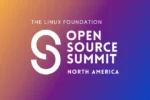On March 9, 1977, Bill Joy compiled the first version of Berkeley Systems Distribution Unix, known as 1BSD. This version was just an add-on to an existing Unix, however. Two years later, he released 2BSD, which added two new programs from his repertoire: vi and the C Shell.
In the 1980s, BSD was just another leg of the Unix table. DEC used it as the basis for Ultrix, and Sun Microsystems based its SunOS on it. But BSD today is more about open-source development than it was in the 1980s. When Unix System V version 4 shipped in the early 1980s, the BSD community began to focus more on the desktop than on the server, and the many varieties of BSD were born.
NetBSD was the first major derivative of BSD to be distributed under an open-source license. The name was coined by its co-creator Theo de Raadt as an homage to the fact that in 1993, the network was becoming the focus of computing. NetBSD’s whole bag is being able to run on hundreds of different types of machines. You can run NetBSD on your VAX, your IBM Power Series, your desktop PC, your laptop, and even on some more archaic devices, such as when NASA used it in the space station on a system that monitors gravimetric fluctuations, as well as for use with TCP connections between satellites.
FreeBSD was the second BSD out of the open-source gate. Almost a year after NetBSD got going, FreeBSD was created as an attempt to make the fastest, most stable operating system possible. FreeBSD 2.0, for example, included the Mach memory management system created by Carnegie Mellon and designed for high-speed, high-use environments. The Mach memory management system lives on to this day in the Mach kernel Apple loves to tout at the center of its operating systems. Apple’s OS is also BSD-based.
OpenBSD was the last of the original open-source BSDs to make it out of the 1990s. Created as a fork of NetBSD by de Raadt in 1995, OpenBSD is all about security and openness in the development process. Though OpenBSD was built with security in mind, it was de Raadt’s departure from NetBSD that prompted its creation. To this day, the exact reason he was asked to leave the NetBSD project is not fully clear, though it’s said to be because of a personality conflict. No matter the reason, he took the opportunity to found another BSD and to try to fix what he felt was wrong with NetBSD. To that end, OpenBSD closely controls its code, and the team behind it performs code audits to ensure security and quality.
Finally, the latest BSD variety, DragonFly BSD, was created in 2003 by Matthew Dillon. Dillon felt that FreeBSD was headed down the wrong path for multi-threading. After making a big stink about how FreeBSD was doing it wrong, his code commit privileges were removed from FreeBSD. It didn’t take long for him to fork the code and build his own operating system.
Oddly enough, perhaps the most influential operating system for DragonFly BSD is not Unix but rather the Amiga OS. The Amiga was a popular desktop OS in the 1980s and early 1990s, and its OS was written by RJ Mical. Dillon has implemented many changes to DragonFly BSD that have been directly inspired by the Amiga.






